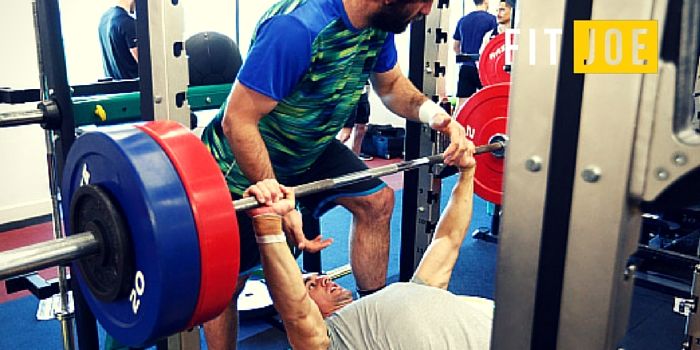‘How much can you bench, mate?’
Set foot in any gym anywhere in the world and get chatting to blokes in there and you’ll no doubt be asked this question.
The bench press is a universal measure of strength, and thus manliness.
That’s why you can get anywhere near a bench on Mondays as everyone is working their chest to bump up their numbers.
But it’s very easy to plateau when training your chest unless you’re constantly changing the stimulus.
If you stick to the same weight and same exercises too long you’ll go stale and your gains will dry up.
If you’ve exhausted all the dumbbell and barbell presses you can think of and need something different to keep those strength gains coming, there’s one old school move you can try.
It’s a favourite of elite bench pressers like British Paralympic powerlifter Ali Jawad, who can bench press over three times his 59kg bodyweight – hitting 190kg.
The rack press could be the answer to all your problems.
Some encouraging signs today! PB rack press off 5cm! Triples at 185kg 💪🏋 @SBDApparel @BulkPowders pic.twitter.com/A32Ky1RmZa
— Ali Jawad PLY (@AliJawad12) November 2, 2015
Also known as bench press lockouts, you’re essentially starting from a dead stop position with the barbell on the lowest notch on the rack.
It makes it devilishly hard as you’re having to generate a ridiculous amount of force initially to get the bar moving from the bottom position.
You’re also not getting the benefit of momentum from lowering the bar down first (eccentric portion) or the elasticity of the muscle and stretch reflex to help you drive the bar up.
Why is it so good at building your bench numbers? Powerlifters use it to build explosive power in their triceps, which are central to a strong lockout at the top of the movement.
But it’s also good for building strength at the weakest part of your bench press – which is often at the bottom of the movement when the bar is at your chest – or mid way through the press (concentric portion) where your triceps take over.
Back to rack presses today! This is by far my favourite variation exercise of the bench press! 160kg x 6 #Rack #Press pic.twitter.com/c4eiqnvvuu
— Ali Jawad PLY (@AliJawad12) March 25, 2015
The technique is simple. Set the barbell up on the lowest notch on the power rack (or similar bench) around four to six inches above your chest.
You can use a medium or close-grip hand position – the closer in your hands, the more it will work your triceps.
Then, generating as much force as possible, push the bar upwards off the rack and lock your triceps out at the top, slowly lowering the bar back down to the rack.
Rack presses work really well with one-rep max work. Although you can do sets of anywhere from three to six reps.






















































